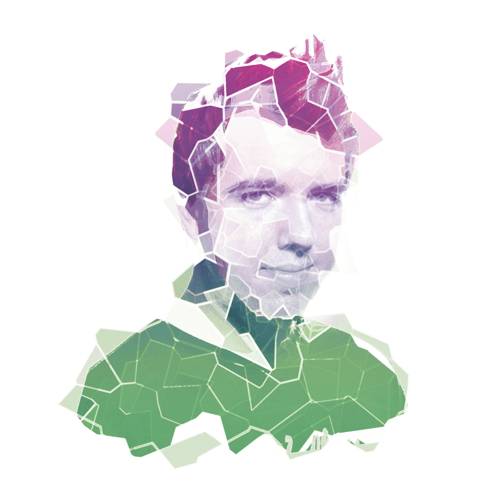Hacking’s changed too. Instead of the polarising minigames of the first BioShock, in which you’d be faced with an impromptu game of Pipe Mania before being allowed to open a door or crack a safe, you’re now presented with a multicoloured bar along which an arrow slides. Stop it in the green and your hacking attempt is a success, stop it in the blue and your aim is true – you’ll MacGuyver the turret into being even more effective than usual.
Of course, miss both of these colours and not only are you really bad at a simple reaction-based game, but you fail the hack attempt. Crucially, regardless of whether you fail or succeed, the world no longer grinds to a standstill while you fiddle with objects – this explains why Pipe Mania’s been replaced by this rudimentary minigame – turrets will still tear away at you while you’re fingering their access panels, and security cameras will gleefully send teams of robots after you while you poke at their innards.
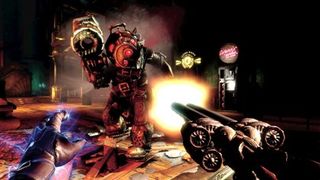
To this end we now have Remote Hacking Darts, which do exactly what you’re imagining them to. That you have to collect and ration these darts turns hacking into a commodity rather than a pure skill, and ties the stealth approach to moving through Rapture more closely to the action approach. Whereas hacking in BioShock - those times you ran through hails of gunfire to reach the safety of your frozen Pipe Mania limbo - felt entirely like cheating, it instead feels like true ingenuity and resourcefulness in BioShock 2.
Just as we prepared for Big Daddy encounters in the first game, we prepare for splicer sieges in the second. As soon as you set down your Little Sister to allow her to harvest a corpse, the deranged residents of Rapture flood into the room to... well, we’re not entirely sure what their intentions actually are. They’re certainly angry, and as our rivet traps, now-allied turrets and cyclone plasmids roar into life, the room is the scene of the most frenetic combat Rapture’s yet seen. Your preparations falter soon enough and you’re left protecting your Sister with reliable plasmids and guns. And drills.
This is where dual wielding begins to pull its weight. Your role as a Big Daddy might not imbue you with any immediate sense of physical superiority over Jack – but the ability to wield a plasmid in one hand and a weapon in the other allows for far more fluid combat with splicers, and at a faster pace too. A paralysing electrobolt followed by a torso-mangling thrust of your drill replaces a similar, wrench-based manoeuvre from the first game, while the benefits of being able to shred a screaming housewife with Gatling gun rounds while simultaneously grilling her with your upgraded Incinerate plasmid are obvious.
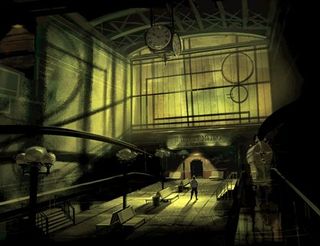
This is where BioShock 2 truly makes you feel powerful. A good thing too, as elsewhere, your stature as a Big Daddy – the toughest enemies from the first game – seems to have been neutered at every turn. Splicers are more powerful, as Jordan explains.
“The balance of the city 10 years on is much more feral and unforgiving than the first game,” he warns us. “The splicers you encounter have been augmenting themselves for years and years – and those who’ve managed to survive since BioShock are truly post-human. They’re able to take on a Big Daddy with ease. So you’re really fighting for survival.”
Brutes are one of these new breeds of splicer, Mafia goon-types with broken fedoras who’ve been takingstrength tonics in the decade between games. They’re walking tanks – not a million miles from Left 4 Dead’s Tank in terms of aesthetics – and they’ll take a fair few smacks before they give it up.
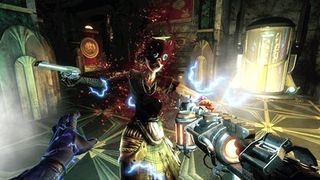
“The Vita-Chambers,” continues Jordan, explaining the various ways this new Rapture intends to punish you, “if you die during a fight with a Big Daddy, you’ll come back to find the Little Sister has healed him. So you can’t just whittle them to death in the way that you once did.” A strange balance has been met then. You’re now in the clomping, commanding iron boots of a genetically advanced, physically-superior super-mutant, but your stomping grounds are populated by enemies more powerful than ever before.
The net total of all this line-shifting is a game that feels severely similar to BioShock in its play style, visual style, format, plot and pace, and that’s something that should cause furrowed brows among those who were expecting more of a departure from the brass-and-glass underwater kingdom.
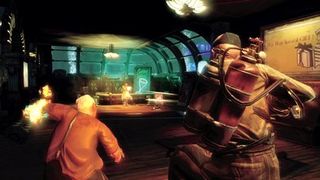
Still, it’s the setting that will ultimately impress, and the opportunity to return to one of gaming’s most original locations in order to rummage around bits of the city that went curiously unnoticed in the first game. Ryan Amusements alone is testament to the sort of quality set-piece locations 2K Marin are capable of conjuring up -dark and twisted insights into the unhinged brainwrongs of Andrew Ryan -and places as unsettling as anything you could care to dig out of old Rapture.
That’s just the tip of this maddening iceberg too: the real thrill will be in uncovering the crackpots -the Sander Cohens -of this new world. And having had 10 years to properly marinate in their own lunacy, surrounded by naught but sea and splicers, they’re sure to be properly cuckoo.
Dec 2, 2009
